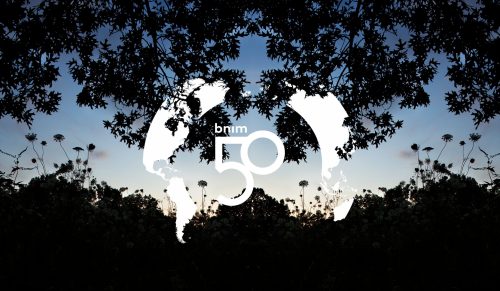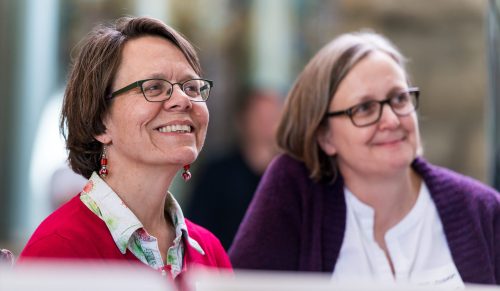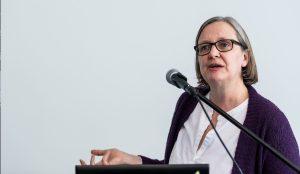
Part 4 | Women in Design: Pillars of BNIM’s Legacy – Laura Lesniewski
Part 4 | Women in Design: Pillars of BNIM’s Legacy – Laura Lesniewski
This March, in celebration of Women’s History Month and 50 years as a practice, we are reflecting on legacy here at BNIM. The journey of our practice – the projects, discoveries, movements, and milestones — is a journey shaped by the passionate, dedicated team of professionals and practitioners who have helped build, guide, and inspire the firm. Among these impactful BNIMers is a group of individuals who, together, represent a long history of pioneering change at BNIM and in the industry. As true innovators, advocates of sustainable practice and policy, and leaders of our firm, BNIM’s women in design are pillars of the firm’s legacy.
We had the opportunity to sit down with several of our female leaders at BNIM who have each shaped the firm through their respective practice and leadership over the last three decades. From Maria’s pioneering work in business development and communication in the AEC industry, to Barb leading the way for females in the architectural practice, to Sarah advancing the continually evolving area of sustainability within architectural specifications, to Laura advocating for global sustainability and resilience from the beginning of the movement in the 1990s — our interviewees have long been at the forefront of innovation in practice, and each continues to shape new paths forward. We are excited to share a series of interviews with BNIMers Maria, Barb, Sarah, and Laura.
Laura Lesniewski, AIA LEED AP – 25 years at BNIM
“I grew up in a rural environment where we spent most of our time outdoors, we were engaged with nature, the relationship was interdependent… All that to say, when someone talks about sustainability to me, it just makes sense. It’s not a question I’ve ever had to wrestle with.” – LAURA LESNIEWSKI, AIA
Over the course of her 25 years with BNIM, Laura Lesniewski has shared many of BNIM’s milestones throughout the firm’s history, from integrating the first Living Machine™ in the State of Missouri to creating net-zero facilities in West Pokot, Kenya. Her efforts to explore sustainable solutions and to build truly thriving communities is demonstrated in her work on projects such as the Anita B. Gorman Discovery Center, the David and Lucile Packard Foundation Sustainability Matrix, and the Omega Center for Sustainable Living. Laura combines a rare blend of attributes that lends a spirit of collaboration and stewardship to her work.
Q: This is BNIM’s 50th year as a practice. What is your view of the history and legacy of BNIM? What does 50 mean to you?
A// “I think primarily because of Bob Berkebile’s work early on, his founding of the AIA Committee on the Environment (COTE) and his personal story of understanding sustainability and resiliency — that early work definitely has influenced us in a deep way in the work that we do. And yet, everybody at BNIM has had a part to play in that legacy. If the rest of us didn’t practice it through our projects, then there would be no legacy of BNIM. It would just be Bob’s legacy. BNIM has a legacy unto itself as a collective, and I think that’s important to realize as we go forward. It’s not a stagnant thing, and it’s not just a part of our history … it’s critical to our future.”
Q: How have you seen the industry evolve as a whole?
A//“So many things have changed in the industry since I’ve started practicing and since I’ve been at BNIM. Technology is just ridiculously different. I wasn’t around then, but BNIM was a crazy early adopter of technology, so it’s been a part of our practice here ever since I can remember.
Also, our understanding of environmental issues has also changed dramatically. It wasn’t as dominant an issue when I was in school, which may still be true in a lot of programs around the country. I think practice has needed to be and has been able to be more nimble than academia in that regard. There are some excellent university programs and parts of programs that do take it seriously, but we need to accelerate that conversation.
The decision to focus on climate action at the national level within AIA has the potential to change the trajectory of architecture in the near future, which is encouraging, but it will take a dramatic culture change in the U.S. and around the globe, beginning within the culture of each firm. It’s an opportunity for the AIA and for architects world-wide to reinvent our voice in the conversation, so I’m excited about that.”
Q: Have you seen the industry evolve in terms of opportunities for women in architecture and design?
A//“At BNIM, we’ve been having more direct dialogues about women in the design industry beginning a couple years ago. We are currently having smaller group conversations (with six to eight people), in the hope that this more intimate context will allow for a more confidential space, sharing real stories of where there’s still a discrepancy in how different genders experience day-to-day practice. I think it’s in those conversations where awareness happens and a culture has the chance to actually change. I know that it’s still a big issue in our industry, and we’re just touching the tip of the iceberg. There’s certainly a lot of work to do, but I’m encouraged.”
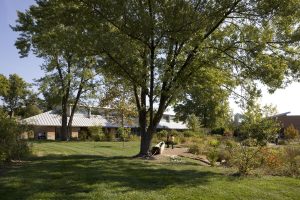
THE ANITA B. GORMAN CONSERVATION DISCOVERY CENTER
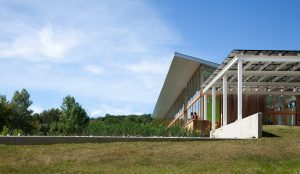
THE OMEGA CENTER FOR SUSTAINABLE LIVING
Q: BNIM has emerged as an industry leader in sustainability through our design practices and research, and also through our staff actively advocating for sustainability in the built environment. Can you describe your experience in this evolution towards sustainable and regenerative design?
A//“I grew up in a rural environment where we spent most of our time outdoors, we were engaged with nature, the relationship was interdependent, different even than my life right now. For some people of a certain age or for people who have a similar childhood experience, I think sustainability makes sense because that’s how we grew up; now it starts as an intellectual idea and then gets to the heart. Those two things – the head and the heart – coming into play are critical. All that to say, when someone talks about sustainability to me, it just makes sense. It’s not a question I’ve ever had to wrestle with.
I feel super fortunate for my experiences at BNIM, which is really when sustainability became a part of my practice. Early on, when Bob was involved with COTE and USGBC, the [Anita B. Gorman Conservation] Discovery Center here in Kansas City was just starting and we were referencing a pilot version of LEED … and that’s how I really started to understand tangible strategies that contribute to sustainable design. There were so many new strategies at the Discovery Center that we were trying to practice and incorporate. It was a real influential project for me from a learning perspective. Maybe one of the biggest things was the incorporation of the Living Machine there, transforming the typically hidden treatment of wastewater into a beautiful part of the building. That was a big deal, [and] that’s when I began to meet true leaders in the sustainable design movement from across the country who made the process of learning a real joy for me.
That turned into many other projects that I got to work on throughout our history, one amazing project after another. A lot of them were firsts. The [Anita B. Gorman Conservation] Discovery Center was the first Living Machine in Missouri. The Lewis and Clark Building in Jefferson City was the first state office building in the country that was LEED Platinum. The Omega Center was one of the first Living Buildings in the country. There were also net-zero communities that we explored in Montreal and upstate New York, just to name a few. So all of these earlier projects, and then our Department of State work where we’ve been trying to incorporate eco-diplomacy goals around the world, have been super challenging, but also pushing us to do more.
Several years ago, I enjoyed working with a couple other folks out in California to create the next cost-of-green report, we call it “The Power of Zero” … studying the costs of Living Buildings, Net Zero projects, and other next generation green buildings. That effort shed some light on what people’s perceptions are on ‘how much does it cost to build a green building?’ which we are still asked to this day. All of those endeavors … [were] a part of my journey so I feel very connected to the journey of the firm. I started without really knowing anything, but with a sensibility and willingness to jump in and figure it out. I am honored to be associated with BNIM and everyone I work with here.”
Q: Where do you think the future of the industry is headed in the next five decades? What are some things you are looking forward to and what are some things you think need to change?
A// “I’m both concerned and hopeful that humanity can actually change, that we’ll have different behaviors, that we’ll relearn our interdependence with nature, and in that process, we’ll realize that we’ll live better lives … healthier, stronger, richer. If we dedicate ourselves to real climate action, we’ll live more in harmony with nature. We’ll live better as neighbors. We’ll live better in communities that are designed with an understanding of this interconnectedness. That’s the crazy part, that if we choose to change, the result is better not worse. And it is a clear challenge for our profession since architects play such a critical role in this global story. Anything that helps us elevate beauty in our buildings and our environments, in our neighborhoods and communities … I’m in.”
